NOTE:
Remember that Warren, Far Hills, and Bernardsville were part of Bernards Township, so these family stories also include those areas.
History showcases some of the greatest reminders of where we came from. Many people new to the area are unaware that the area’s rich history is tied to some of the founding families who chose this location in the early 1700s.
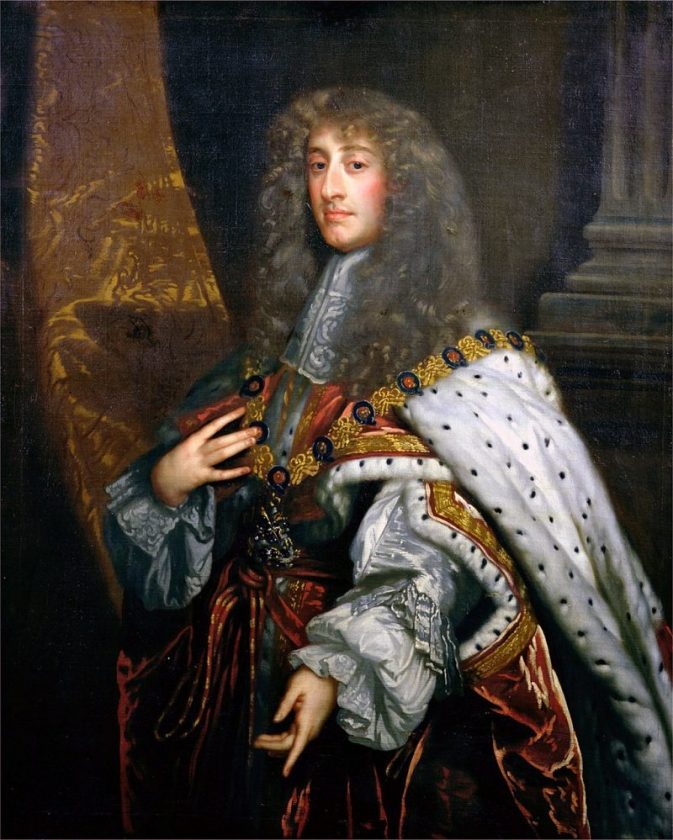
In 1701, East and West Jersey’s fourth governor, Col. Andrew Hamilton, and the Proprietors sought to settle the East Jersey province, appointing John Harrison for that purpose. Harrison made large purchases from the Lenni Lenape Indian tribe. As many have read, John Harrison, agent of King James II, purchased the area from Chief Nowenoik of the Lenapes, a real estate package of 3,000 acres for the equivalent of $50.
Note: A map of Harrison’s purchase is reportedly located at the New Jersey Historical Society. At the time of the signing, John Harrison had been living in Rocky Hill, New Jersey.
The 3,000 acres were then known as the Passaic Valley, bounded by the Passaic River on the east, Green Brook (a tributary of the Raritan River) on the west, the Dead River on the south, and Penn’s Brook on the north. The deed was dated June 24, 1717. After John’s death, his son, Benjamin Alexander, sold his father’s entire purchase to Daniel Hollingshead and George Risarick, who then sold it to Co. John Parker of Amboy and James Alexander from New York. Parker opened the Tavern in Bernardsville, and Alexander kept his land and willed it to his son William, Lord Stirling.
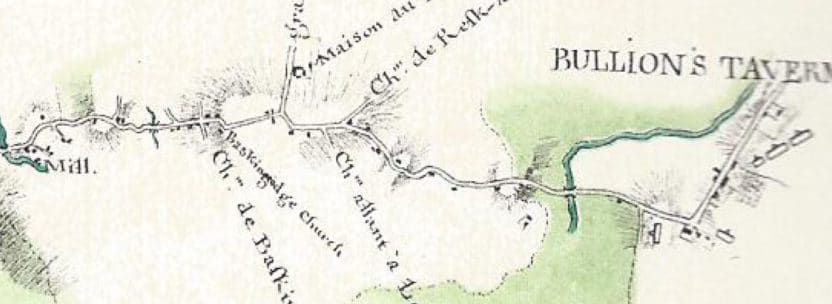
Seven Early Settlers

1720 – James Alexander – Scotland
James Alexander, father of William Alexander (Lord Stirling), was a large landowner who had to deal with “squatters” on his land. James Pitney was noted as being on James’ land when he first arrived in the area. Research shows Cornelius Brees, from Staten Island, bought land in 1720 from James Alexander on the East side of the Dead River, which had been occupied by James Pitney. John Ayres’s son Obadiah also bought land from Alexander.
Harrison must have died, and the property passed through Hollingshead and Eisarick to John Parker (who owned the John Parker tavern in Vealtown) and Alexander as early as 1720. For in that year, Parker and Alexander sold a portion of the southeast corner of their purchase to Cornelius Brees of Staten Island. The four proprietors had the lands regularly surveyed in 1727 and laid out into farms of one hundred fifty to two hundred acres each. These were drawn by ballot by the four joint owners at the spring term of the Supreme Court for 1728, held at Perth Amboy. The respective proprietors were then left to dispose of their lots on their own terms.
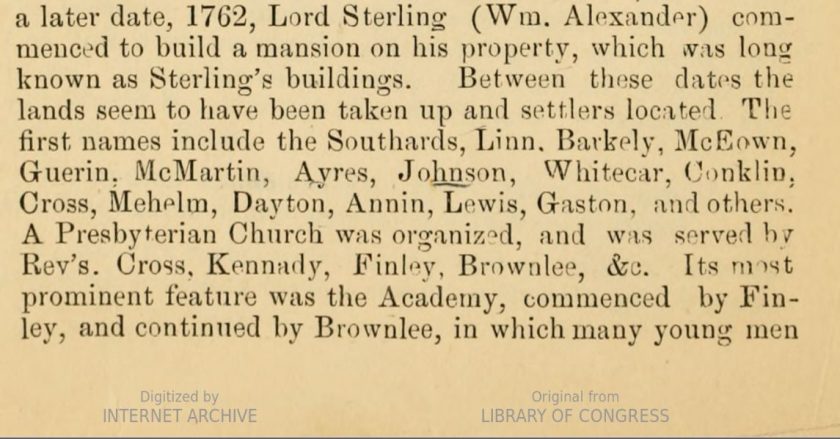
James Alexander, father of William Alexander (Lord Stirling), appears to have acquired what is now known as the “Stirling Property.” He was also associated with John Budd, of Philadelphia, in lands that extended north into Morris County. The land was listed as No. 121, James Alexander, Sept. 17, 1741, 786 acres in six tracts in Harrison’s Neck. The second piece was No. 99, to James Alexander, March 28, 1728, 272 acres on the east side of the North Branch of Dead River. A third plot, No. 142, was bought by James on July 10, 1744, containing 65 acres at Basking Ridge, where son William built his Stirling Manor in 1761.
William Alexander, son of James Alexander, was born in New York City in 1726. Stirling led a brilliant military career and received praise from his colleagues and enemies. After his death on Jan. 15, 1783, his wife, Lady Stirling, received a letter of esteem from General Washington. The New Jersey Historical Society has a series of boxes of documented transactions.
- The Mr. Local History Project has written additional research about William Alexander, the Earl of Stirling:
1720 – Cornelius Brees (Breese) – Staten Island, NY
About 1720, Cornelius Brees, of Staten Island, bought land from James Alexander, ” on the east side of the north branch of Dead River, at the southwest corner of the Parker and Alexander’s area. It appears that James Pitney remained in this vicinity and became a freeholder, notwithstanding that his first home was sold from under him to Brees, since he was one of the trustees to whom the church lot was deeded in 1731. So Pitney was actually a squatter on the land Brees purchased.
Three members of the Brees family gave the ultimate sacrifice during the war. John Brees Sr., John Brees Jr.( b. 8 Nov 1738 ) and Stephen Brees all fought for the new nation and are buried in the Presbyterian cemetery. Cornelius served as a Sergeant in the NJ Frontier Militia in 1757 and 1758. John’s son, Timothy (b.1758) Brees, married Elizabeth Doty.
1722 – James Pitney – New Brunswick, NJ
James Pitney lived in New Brunswick, New Jersey, before 1722, and then moved to Basking Ridge, New Jersey. He was a member of the First Company Militia Regiment in 1715. His will, dated April 13, 1750, lists his wife, Susannah, and son, Jonathan. Records indicate the Pitneys settled in the Liberty Corner section of Bernards Township. James and his wife Susannah had three children: James Pitney, b. 1722, Liberty Corner, Somerset Co., and Benjamin Pitney, b. 1726, Liberty Corner. A third, Shubael Pitney, was born approximately in 1731.
1727 (possibly 1717) – John Ayres (Ayers, Eyers) – Newbury, MA
John Ayres came from Woodbridge, New Jersey, and was born on March 02, 1663, in Newbury, MA. Son of Obadiah Ayres and Hannah Ayres (Pike), husband of Mary Ayers and Ruth Ayres. He had seven sons: John, Thomas, Obadiah, Nathaniel, Benjamin, Moses, and Aaron. He moved to Basking Ridge the same year Harrison bought the land from the Indian Chief Nowenwalk.
John Ayres, who settled on the Millstone in 1717, is mentioned as having lands in the eastern part of the township in 1727. John Ayres is noted for donating 1 ½ acres, including the land on which a log meeting house stood in 1730, but it was said that the meeting house had probably been there since at least 1725 (the BRPC states 1717).
A document dated February 8, 1731, was found, formally recognizing the donation of a “meeting house.” Basking Ridge was the first religious center in the area. It has been noted that, in addition to being a house of prayer, education was also key, and there is mention of schooling there as early as 1720-1725. John died on October 4, 1732, at the age of 69, yet no one knows where he’s buried. His son, John Ayers, is buried in the BRPC graveyard.
John’s son, Obadiah Ayres, purchased 153 acres from John Alexander. It’s stated he later left for Warren County in Hacketstown sometime before 1753.
1736 – Alexander Kirkpatrick – Scotland
Another family worthy of particular mention was that of Alexander Kirkpatrick (b.1697), who settled at Mine Brook in 1736, on the farm lately owned by Henry Baird. The Kirkpatricks belonged to a noble family in Scotland. Alexander, the family’s ancestor in this country, was born at Watties Neach, Dumfriesshire, Scotland. He moved with his family to Belfast, Ireland, after the birth of his son, David, around 1725. In the spring of 1736, he embarked at Belfast for America. After a stormy voyage of thirteen weeks, they landed at New Castle, Del. Passing through Philadelphia, they wandered up through the State of New Jersey (which was then partially settled) till they reached Bound Brook, and thence went over the mountains to the place which they selected for a habitation. Without roads in the country, they followed an Indian path through the wilderness.
When they came to a spring of water at the side of what has since been called ” Mine Brook,” they settled down, built a log house, and went to work. The spot was well chosen, about two miles west of the present site of Basking Ridge. It embraced the southern slope of Round Mountain, in a well-timbered region, with unfailing springs of pure water, the rich meadowland through which Mine Brook runs. Alexander Kirkpatrick died on June 3, 1758. He is buried at the Basking Ridge Presbyterian Church Cemetery
1697 – Henry Alward III – Woodbridge, NJ (First Generation American)
Henry Alward III was born in Woodbridge, New Jersey on March 29, 1697. His father, Henry, was from Scotland and settled in Woodbridge. Henry III settled between Liberty Corner and Basking Ridge, near a saw and grist mill once owned by Matthias Woodward (not Woodard as others quote). While historical documents mention Bullion’s Tavern (also known as the William Annin Hotel, Liberty Corner Hotel, Post Office, and currently an Exxon), we’ve narrowed it down to Woodward’s Mill, which was located near Grist Mill Park and Road in Basking Ridge, along Harrison’s Brook. So, the plot thickens regarding Henry III’s residence.
He was first married to Sara (Compton) Alward in 1715. After her death, he later married Anne Ford in 1721. We’re still looking for his original homestead area.
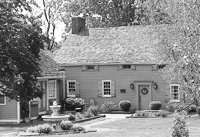
It can get confusing, but this is the first of many Henrys in the lineage, so it’s often challenging to follow. The Henrys in Liberty Corner had eight children: David, John, Henry IV, Samuel, Benjamin, Sarah, Mary, Mercy, and Henry V. and William.
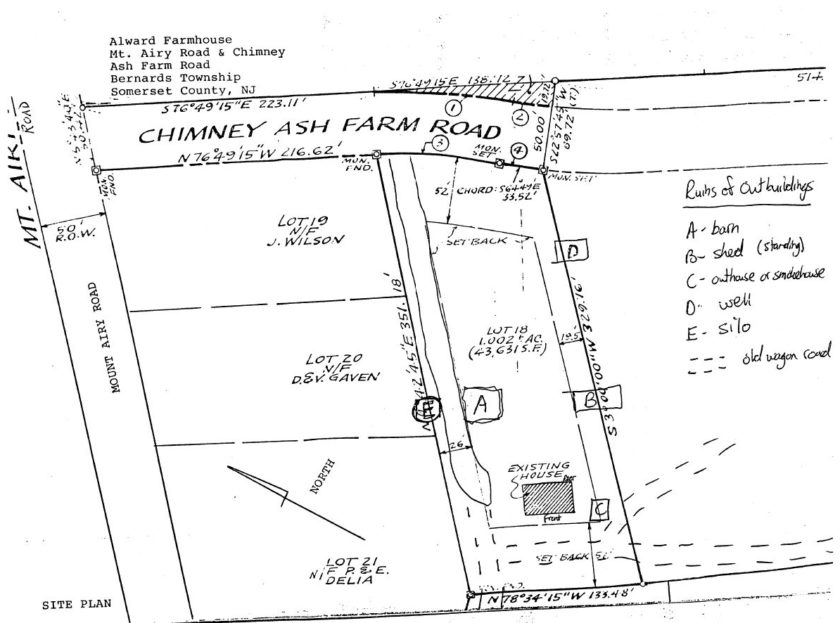
Henry Alward IV married Mary Cox and had eight children. Henry’s fourth son, Samuel, married Caty King, sister of John King, of Liberty Corner. Benjamin, the third son, married Sarah Ayers (Ayers), daughter of Elisha Ayers and sister of Major John Ayers (Ayers) of Basking Ridge. William married Elizabeth, daughter of William Cross, and moved to New York. Henry III died in Basking Ridge in 1732 and is buried in the Basking Ridge Presbyterian Cemetery. There are twelve Alwards buried in the churchyard.
1720 – John Johnston aka John Annan – Annin’s Corner – Scotland
John’s birth year, 1688, figures prominently in Scottish history. It marked the end of the 50 Years’ Rebellion, a bloody religious conflict. The rebels were the Covenanters, who were persecuted for challenging the King’s belief that he, not God, was the spiritual head of the Scottish church. “
Rather than give his son John up to be killed by King Charles I, John’s father, James Johnston, sent him and his family to America. John landed in the colonies in 1722 with his wife, Elizabeth Van Dorn, and three children: John Jr., William, and a daughter. The family was seeking religious freedom as they had married outside the church and did not want to be found in the New World, so they adopted an alias in the name of Annan. It later evolved into “Annin” and remained unchanged thereafter. The area over time became known as “Annin’s Corner.
John (Johnston) Annan initially purchased 270 acres of land from William Penn, where the family settled. It is rumored that John Johnston knew James Alexander, a fellow Scotsman, whose son was later referred to as Lord Stirling. Lord Stirling’s father, Alexander, had purchased large chunks of property in the Basking Ridge area. The homestead originally spanned 270 acres but expanded to over 2,700 acres, encompassing present-day Lyons Road and the entire community of Liberty Corner, extending north to the location where the William Annin Middle School stands today.
The Mr. Local History Project has written additional research about the Annins of Liberty Corner
- The Annin’s of Liberty Corner: Patriots, Flag Company and a Middle School
- The American Flag Means More in Liberty Corner
BONUS Family
1750 – The Boylans (Bullions / O’Boylans) of Liberty Corner, Basking Ridge, and Bernardsville
The Boylan family, originally from Coleraine, Londonderry, Ireland, emigrated to America in the early 18th century, with patriarch Aaron Boylan settling in Pluckemin, New Jersey, around 1750. Aaron and his wife Eleanor Hodge had 15 children, and their descendants became prominent landowners, merchants, and tavernkeepers in the Somerset Hills region. The family played a key role in the local economy and Revolutionary War-era community life, most notably through Captain John “Bullion” Boylan’s taverns in Liberty Corner and Bernardsville.
Aaron Boylan is believed to have purchased his 150 acres in the Pluckemin area (then part of Bedminster Township) between 1749 and 1751. However, the exact seller is not definitively recorded in surviving documents. However, land transactions in that region during the mid-1700s were often conducted through or traced back to John Johnstone or his heirs, large-scale proprietors of East Jersey lands. We posted a new story about them. Details are at the bottom of this story.
1717 – The Meeting House That Became a Church
In Baskingridge, some Scotch Presbyterian families who had settled there were worshipping in a log meeting house which they had erected a year or two previously.” The church can make a case for having been founded in 1716, but it was settled in 1717. The Basking Ridge congregation was recognized by the first Presbytery in the U.S., located in Philadelphia, in 1729.
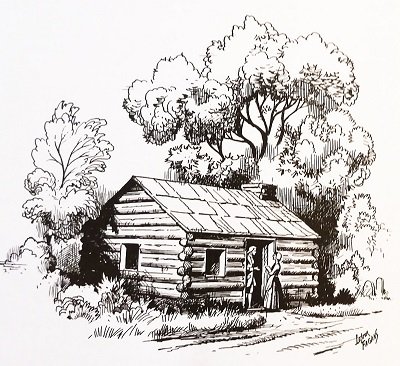
The Trustees of the Presbyterian Congregation included James Pitney, Henry Rolfe (Newbury, MA), Mordecai McKeene, George Pack, Samuel Rolfe (Henry’s son), Daniel Morris, Thomas Riggs, and Obadiah Ayres (John’s son). That log cabin structure lasted until 1747, when a better structure was built. The Ayres lived in the area for over 100 years. The deed was not recorded until 1763.
Building on John Ayrer’s donation, in 1728, John Budd of Philadelphia (he was from Phia) donated 100 acres to the Basking Ridge congregation for the continued use of the”meeting house.”
The Presbyterian congregation of New Brunswick was later founded in 1738, and Basking Ridge Presbyterian Church became a part of it. John Cross was the first Moderator. The congregation believes John Cross is buried adjacent to the church, but his grave has not been found. There are 35 of Cross’s descendants buried here. He had one son, Robert (who had 11 children: 8 sons and 3 daughters) and two daughters.
In 1750, Dr. Samuel Kennedy, fourth pastor of the Presbyterian Church, established a classical school in Basking Ridge to prepare young men for college. His successor, Dr. Robert Finley, later ran the school.
1732 The Secret is Out
In 1732, the area began to gain traction. The names are honored, as many have street names across the town. The Conkling, Alward, McCollum, Dayton, Doty, Boylan, Heath, Hall, Lindsey, Rickey, Lewis, Anderson, Whitaker, and Hand families landed in Basking Ridge. William Annin landed in Annin’s Corner (Liberty Corner) and built his stone home in about 1760.
Abraham Southard migrated to Basking Ridge in 1735, with his eight children from Hempstead, Long Island. His son, Henry Southard, was born in 1747 in Basking Ridge and lived to be 95 years old. He had thirteen children. His son, Samuel, became a United States Senator.
What are Others Reading This Week? Top 5 MLH Posts Right Now
Additional Research
- Did you know that Morristown was named initially West Hanover? True
- Did you know that Tewksbury was originally known as New Germantown? True
- Basking Ridge became a local hamlet after King George II’s 1760 Charter officially recognized Governor Sir Francis Bernard’s township.
- Need help researching your family?
- 1912 catalog of Basking Ridge Presbyterian Churchyard by Antoinette Quinby, founder and first President of the Woman’s Branch of the New Jersey Historical Society. It was later performed by resident Nettie Allen, who captured the stones’ epitaphs.
- Presbyterian Church in Basking Ridge – A Historical Disclosure.

84 Streets Were Named After Bernards Township Residents
Based on our analysis and categorization, 84 street names in Bernards Township are named after local residents (Rev War, Locals, Reverends). So is the street you live on named after a former Bernards Township resident? Now you know where to look.
| Street Name | Origin |
| ACKEN RD | Named for the Acken family of Liberty Corner, landowners and shopkeepers |
| ALEXANDRIA WAY | Named for William Alexander, Lord Stirling (1726-1783) |
| ALLEN RD, CR (652) | Named for Josiah Allen of Liberty Corner, descendent of Ethan Allen, American soldier and patriot, 18th Century |
| ALLEN ST | Named for original estate of the Chapin-Earhart family |
| AMBAR PL | Named for settlers in the area, early 20th Century |
| ANNIN RD | Named for the John Annin family (Johnstons of Annandale, Scotland). Their 1,000 acres in 1722 were called Annin’s Corner and later renamed Liberty Corner |
| BALDWIN CT | Named for an old family of Liberty Corner, 19th Century |
| BERNARD DR | Named for Sir Francis Bernards, provincial Governor of New Jersey 1758-1760 |
| BROWNLEE PL | Named for the Rev. William Brownlee, sixth pastor of the Basking Ridge Presbyterian Church. Street originally called Back Street (1783-1860) |
| BULLION TERRACE | Named for the Bullion (Boylan) where the names were interchanged in Pre-Revolutionary War documentation referencing to the French and Continental Troops passing thru the area in 1781. Maps showed Bullion’s Tavern as well. |
| CARSWELL CT | Named for the Carswell family, active in township community affairs since the 20th Century |
| CHAPIN LN | Named for John Collyer family, large landowners on south maple Avenue, 19th Century |
| CHILDS RD | Named for William Childs, who moved the barn to the Old Mill Inn site and Samuel Childs, benefactor to the Bernards Township Library in the 1900’s |
| CODDINGTON CT | Named for early settlers in the West Millington area of the township |
| COLLYER LN | Named for the Rev. John Cross, the first pastor of the Basking Ridge Presbyterian Church |
| CONKLING ST | Named for the Conkling family, 19th Century settlers in Bernards |
| COOPER CT | Named for early settlers in the township |
| CROSS RD | The Bernards Plateau is named for early settlers in the township. In 1939, Carl G. Decker sold this tract to Wheeler Corporation, making it known as the Bernards Plateau. |
| CULBERSON RD | Named for the Culberson family, landowners for more than 150 years. The street runs through their property |
| DAYTON ST | Named for William L. Dayton (1807-1864), U.S. Senator, Vice Presidential candidate and Ambassador to France |
| DECKER ST | Named for W. J. Allen who owned much land in Basking Ridge Village in the mid-19th Century |
| DOGGETT CT | Named after the President of the High Meadow Hunt Club |
| DOUGLAS RD | Named for the Douglas family who settled this area in 1765 |
| DRYDEN RD | Named for John Dryden (1631-1700) English poet, dramatist and critic |
| DYCKMAN PL | Named for the Rev. W. H. Dyckman, who preached in both the Basking Ridge and Methodist Churches, 19th Century |
| E ALLEN ST | Named for the Edward Lewis family who arrived in the 18th Century and contributed to many township activities since 1730’s |
| E CRAIG ST | Named for Daniel D. Craig, banker and storekeeper, 19th Century |
| E LEWIS ST | Named for the Rev. James English (1810-1873), the first pastor of the Liberty Corner Presbyterian Church |
| ELLIS DR | Named for Monroe F. Ellis, for whom Monroe Place was also named in 1900’s |
| ENGLISH PL | Named for original family on the property before development in late 1900’s |
| EVERSON PL | Named for the original family on the property before development in the late 1900s |
| FORBES CT | Named for James P. Goltra (1792-1871), farmer, judge, and builder of the Liberty Corner Presbyterian Church |
| GOLTRA DR | Named for James P. Goltra (1792-1871), farmer, judge and builder of the Liberty Corner Presbyterian Church |
| GOVERNOR DR | Named for Sir Francis Bernards (1712-1779), NJ Provincial Governor, 1758-1760 |
| GRANVILLE WAY | Named for John Carteret, The Earl of Granville, (1690-1763) British statesman and orator |
| HAAS RD | Named for Isaac L. Irving’s family of Liberty Corner—former mortician, wheelwright and blacksmith, 19th Century |
| HADLEY CT | Named for Henry K. Hadley (1871-1937) U.S. composer and conductor |
| HARRISON BROOK DR | Named for John Harrison, agent of the King of England, who bought 3000 acres of land for $50 from the Lenai Lenape Indians in 1717 |
| HARTLEY LN | Named for David Hartley (1705-1757), English physician and philosopher |
| HENRY ST | Named for Parmenus C. Henry, owner of P.C. Henry’s General Store and other properties in the area, 19th Century |
| IRVING PL | Named for the Johnston family who left Annandale, Scotland, and arrived in 1722 in an area known today as Liberty Corner |
| JOHNSTON CIR | Named for Mary Lewis Kinnan (1764-1848) captive of the Indians, rescued and returned to Basking Ridge, in 1794 |
| KINNAN WAY | Named for estate of Walter Reynolds, most of property is now occupied by U.S. Veterans Medical Center, Lyons |
| KNOLLCROFT RD | Named for Peter Layton of Liberty Corner, former mortician, wheelwright, and blacksmith, 19th Century |
| LAYTON RD | Named for the Edward Lewis family who arrived in the 18th Century and contributed to many township activities since 1730’s |
| LEWIS ST | Named for Lord Stirling, William Alexander (1726-1783), major general in the Continental Army whose estate “Stirling Manor” was built here in 1762 |
| LORD STIRLING RD | Named for David Lyons’s family here in lat 18tuh Century. Family owner land where Lyons Railroad Station is located and had encouraged Bernards to bring first railroad to area in 1872. |
| LURLINE DR | Named for Lurline Eberkardt, accidentally shot while hunting |
| LYONS PL | Lyons Railroad Station was named for the David Lyons family, who lived here in the late 18th Century. The Lyons family owned the land where Lyons Railroad Station is located and encouraged Bernards to bring the first railroad to the area in 1872. |
| LYONS RD | Named for a thoroughfare in the Township which terminates in Martinsville (Bridgewater). Named for the prominent Martin family |
| MARTINSVILLE RD, CR (525) | Named for the Meeker family which had large land holdings since the mid-19th Century |
| MEEKER RD | Named for the Milito family who occupied land and have lived there since the late 1800s |
| MILITO WAY | Named for Dr. Amadee Voorhees, a country doctor in the mid-19th Century |
| MONROE PL | Named for Monroe F. Ellis for whom Ellis Drive was also named in 1900’s |
| MORRISON ST | Named for early settlers in the Township |
| N ALWARD AVE | Named for the Alward Family who settled on land here in 1732 |
| N FINLEY AVE, CR (613) | Named for the Rev. Robert Finley (1772-1817), fifth pastor of the Basking Ridge Presbyterian Church and builder of the 1809 Brick Academy |
| N VOORHEES DR | Named for an early family that settled in the area |
| OAKLEY ST | Named for James Pitney, the first recorded settler in this area, early 18th Century |
| OSBORNE PL | Named for J.H. Osborne’s sawmill and pond |
| PENNINGTON ST | Named for Dr. William Pennington, country physician |
| PITNEY CT | Named for Austin P. Spencer, lost at sea in the North Atlantic while piloting a bomber on submarine duty, in 1943 |
| RADEL PL | Named for a 19th Century farming family |
| RICKEY LN | Named for Col. Israel Rickey (1744-1821), a valuable officer in the Revolutionary War |
| RIGGS CT | The Riggs family settled in the area in the early 1800’s |
| RUNYON DR | Named for early settlers in the West Millington area |
| S ALWARD AVE | Named for the Alward Family who settled on land here in 1732 |
| S FINLEY AVE, CR (613) | Named for the Rev. Robert Finley (1772-1817), fifth pastor of the Basking Ridge Presbyterian Church and builder of the 1809 Brick Academy |
| SCOTSMANS WAY | Named in honor of the Annin family, known as Johnston in Scotland. Settled Liberty Corner area in 1722 |
| SOUTHARD PL | Named for the Southards, Father Henry (1747-1842), US Representative; Sen. Samuel L. (1787-1842), US Senator, NJ Governor, Secretary of the Navy |
| SPENCER RD | Named for the Sutro family which owned property on South Finley Avenue. Son Frederick (1879-1964) was executive director of the NJ Park Commission |
| SUTRO PL | Named for Harold Thomson, former mayor and township committee member from 1948 -1956 |
| THOMPSON WAY | Named for Daniel Vail (1735-1793), large land owner & distant cousin of Alfred Vail, who with Samuel F. B. Morse invented the telegraph @Speedwell, Morristown, 1844 |
| TURNER ST | Named for Kenneth A. Turner Sr., Bernards Township Engineer, 1932-1957 |
| TYSLEY ST | Named for early settlers in the Township. Tysley Avenue is in Bernardsville |
| VAIL TERR | Named for Dr. Amadee Voorhees, a country doctor in the mid-19th Century |
| VAN DORN RD | Named for Ferdinand Van Dorn (1807-1902), who owned and operated the flour/grist mill in Franklin Corners |
| VANDERVEER DR | Named for Dr. James Vanderveer (1838-1913), country doctor |
| VOORHEES DR | Named for the Woodward family which supplied grain and material to the Revolutionary War troops at Jockey Hollow |
| W CRAIG ST | Named for Daniel D. Craig, banker and storekeeper, 19th Century |
| W HENRY ST | Named for Parmenus C. Henry, owner of P.C. Henry’s General Store and other properties in the area, 19th Century |
| WHITENACK RD | Named for the Whitenack family which settled here in the mid-18th Century and were large landowners |
| WOLF LN | Named for Lyla Wolf Florio’s maiden name, property owner |
| WOODWARD LN | Named for Woodward family which supplied grain and material to the Revolutionary War troops at Jockey Hollow |



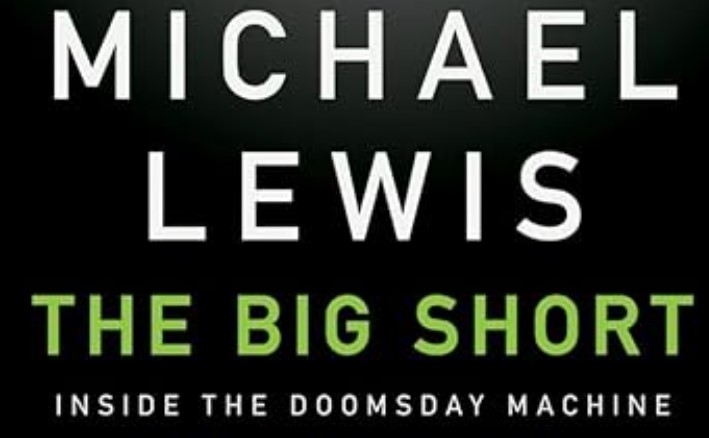
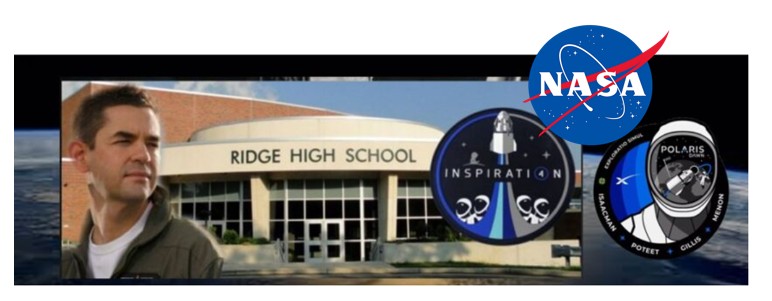
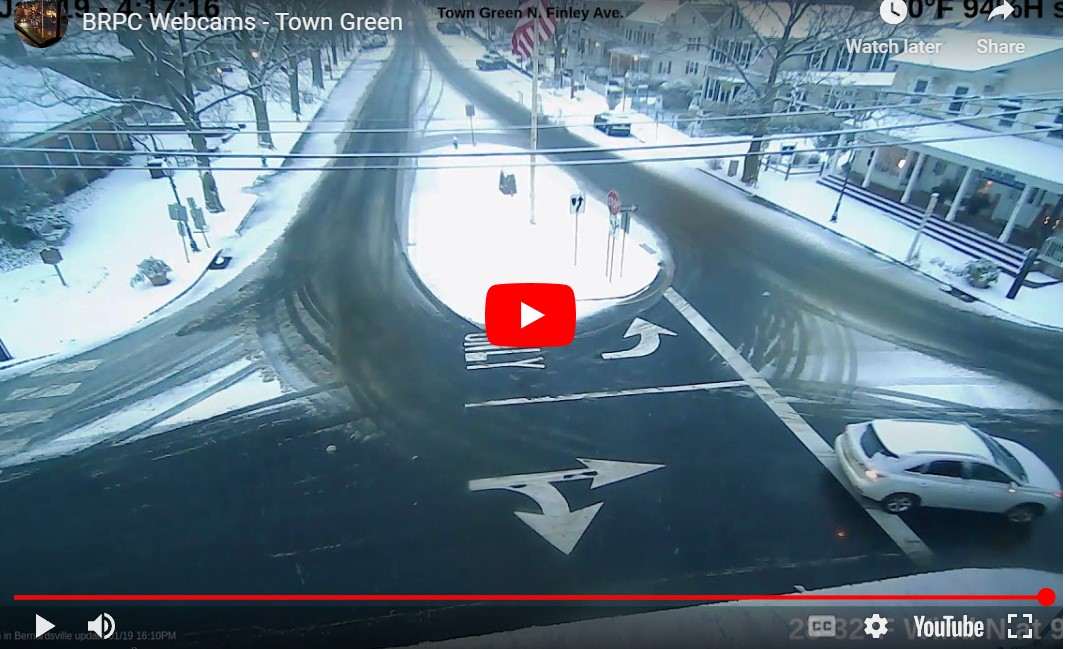
Did you come across the name Rev. Francis Peppard? We believe him to be one of the first Pastors of the Basking Ridge Presbyterian Church? I am a descendant of his.
Yes we did – 4. Peppard, Mary, dau. of Francis & Clarrisa 1802
Peppard, Francis 1760
Peppard, Clarissa 1775
Peppard, Reuben C. 1806
Re: Brees family buried in the Presbyterian Churchyard
John Brees Sr. 1713-1803 is almost certainly buried in the cemetery, But in his sixties at the beginning of the war, it is unlikely that he served on active duty.
John Brees Jr. 1738-1829, Did serve in the war, but he is not buried in the cemetery. He emigrated after the war to Horseheads, NY where he is buried.
Stephen 1755-1833. served in the war. He lived his entire life in Basking Ridge and is buried in the cemetery. The grave is marked.
There has never been a King James III of England. The King of England in 1717 was George I.
James Francis Edward Stuart, the son of the deposed James II, was a pretender to the throne. He styled himself as the King James III of England. He left England as an infant in 1688 during the Glorious Revolution. He never set foot in England again; was never coronated; and never ruled England, Ireland or Scotland.
Great catch! This statement had been handed down for so many years, it took the internet to call it out. We’ve made the correction. It was actually King James II. Thanks for writing.
Any information on Daniel Hollingshead after he sold this land? Where he might be buried? I am a descendant of his.
My 7th great grandfather, James McCoy (1688-1747), died near Bound Brook at age 59. He was the first elder of the Bound Brook Presbyterian Church when it formed in 1738. His will says he resided “between the first and second mountains in Somerset Co.” Is that closest to Bernard? His will names wife Mary and daughters Margaret, Sarah, and Elizabeth McCoy, plus two slaves. Like him, his first wife Sarah (1693-1744) was buried in the Old Presbyterian Graveyard in Bound Brook. Her stone is the oldest there. I know little else about them. I do not know his parents or where he resided during his first 50 years of life. Can you tell me anything about him? Was he among the earliest settlers of the county? Might he have come from New Brunswick NJ since the Bound Brook church was formed from the New Brunswick Presbyterian church? Can you suggest any leads?
Thank you for the very informative Basking Ridge essay. My 7th great grandfather was Alexander Kirkpatrick and you did a very nice spotlight on him and his family. His wife’s name was Elizabeth but we have not been able to find her maiden name…any ideas where to look? Does she have a tombstone in Basking Ridge Presbyterian Graveyard next to Alexander?
Whom could we ask for permission to use the little illustration of the meeting house?
We’d like to use it in a family history book, which will probably have a very limited
sale potential.
Our ancestor, John Conn, owed ten pounds to the Brown estate, in 1750, probably for land he held on the E. Branch of Dead River.
Thanks, Bud Conn